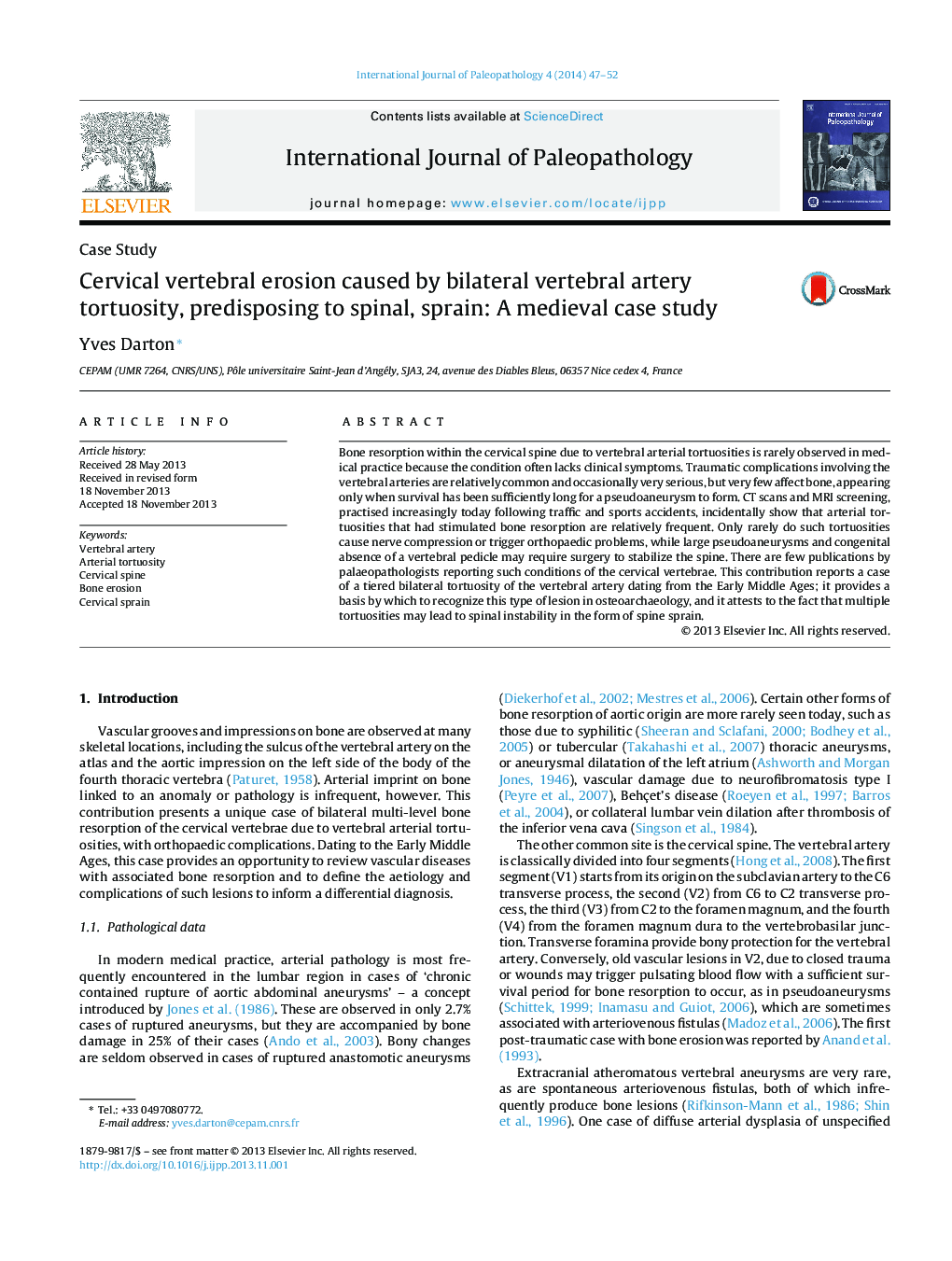| Article ID | Journal | Published Year | Pages | File Type |
|---|---|---|---|---|
| 101377 | International Journal of Paleopathology | 2014 | 6 Pages |
•Cervical spine lacunae linked to vertebral artery tortuosities are described.•This case is specific because of its bilateral and multilevel lesions.•It follows a cervical sprain pattern linked to spinal instability by loss of bone.•Its dual interest lies with its comprehensive pathological manifestations and their biomechanical consequence.
Bone resorption within the cervical spine due to vertebral arterial tortuosities is rarely observed in medical practice because the condition often lacks clinical symptoms. Traumatic complications involving the vertebral arteries are relatively common and occasionally very serious, but very few affect bone, appearing only when survival has been sufficiently long for a pseudoaneurysm to form. CT scans and MRI screening, practised increasingly today following traffic and sports accidents, incidentally show that arterial tortuosities that had stimulated bone resorption are relatively frequent. Only rarely do such tortuosities cause nerve compression or trigger orthopaedic problems, while large pseudoaneurysms and congenital absence of a vertebral pedicle may require surgery to stabilize the spine. There are few publications by palaeopathologists reporting such conditions of the cervical vertebrae. This contribution reports a case of a tiered bilateral tortuosity of the vertebral artery dating from the Early Middle Ages; it provides a basis by which to recognize this type of lesion in osteoarchaeology, and it attests to the fact that multiple tortuosities may lead to spinal instability in the form of spine sprain.
